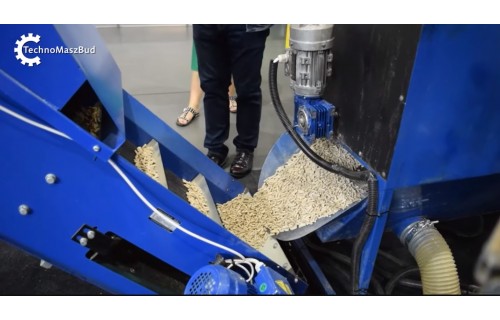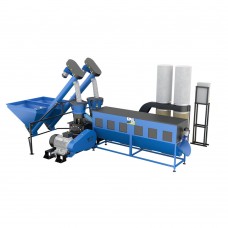The production process of fuel pellets

According to data collected by the Central Emission Register of Buildings, there are over 400,000 pellet boilers registered in Poland. We can assume that the demand for this fuel coincides with the annual production, estimated at around 2 million tons. Due to last year's turbulence related to the supply and price of pellets, many potential producers, distributors and users are refraining from purchasing pellet production lines and pellets themselves, explaining that pellets are too expensive.
What is pellet and what is it made of?
Pellets are heating fuels made from chemical-free by-products from sawmills and carpentry shops. These are sawdust, shavings and chips from both coniferous and deciduous wood processing. Pellets are granules, the diameter of which is usually 6 or 8 millimetres. This pellet size is optimal for automatic filling of the heating boiler and ensures clean combustion as well as service.
Advantages and disadvantages of pellets
There is no doubt that for the end user, pellets are an energy-beneficial fuel, the energy value of which (19 MJ/kg) is slightly lower than the energy value of coal (23 MJ/kg). From an ecological point of view, it is a renewable fuel that contributes to sustainable development, and for the consumer it means convenience resulting from less involvement in the maintenance and servicing of the heating boiler.
In terms of ecological balance and sustainable development, pellet production is justified when the raw material is wood waste and not raw material obtained as a result of deforestation. Therefore, environmentalists emphasize that whole logs should not be used for pellet production.
Another important aspect perceived by consumers as a disadvantage is the instability of the pellet price in recent years. However, prices should always be viewed in the long term.
Pellet manufacturing process
The production of this fuel is based on the principle of compressing the raw material, such as shavings or sawdust. To produce one ton of pellets, 6-8 m³ of raw material is usually needed. The final result depends on physical properties, such as humidity and density.
The first stage in the production process is to clean the raw material from unwanted impurities. These can be particles of various metals or stones. Then, due to the diversity of the raw material in terms of size, it is directed to a hammer mill, where a homogeneous fraction is obtained.
In the second stage, the raw material undergoes a drying process. As a rule, sawdust, shavings and chips have a much higher humidity than the required one. It even reaches a level of approx. 40%-50%. After drying, the humidity of the raw material drops to even 10% and this is a parameter that determines the quality of the pellet and its subsequent clean combustion in the boiler.
The next stage is the conditioning of the raw material. This is usually done by adding a small amount of water during the pelleting process itself, although some manufacturers add various types of agents that support pellet production, such as starch or flour.
The next stage takes place in the pelleting machine matrix itself. The soft raw material is pressed under high pressure into the matrix holes using rollers, and the finished pellet exiting them is cut to a given length using knives. During the pelleting process, the temperature at the interface between the matrix and the rollers is between 60°C and 80°C. This causes the lignin contained in the raw material, which is a natural binder, to contribute to the formation and binding of the pellet.
The fifth stage is the cooling of the final product. The pellet granules cool in the open air. Cooling can be intensified by means of additional fans mounted on the belt conveyor. During the cooling process, the bonds solidify and become stable. Thanks to this, the pellets retain their shape until they are burned in a boiler, furnace or fireplace.
The last stage is sifting. Dust and improperly compressed pellets are separated and sent back to the production process, while good pellets are packed in bags or transported to a container/silo as loose goods.
The final product can be certified. Depending on the ash content, nitrogen compounds and calorific value and humidity, fuel pellets are divided into 3 quality classes. Class A1 pellets guarantee the highest quality and are mainly offered to individual customers. Class A2 pellets are medium quality pellets and are mainly used in large heating installations. Class B pellets are mainly used in boilers equipped with a self-cleaning burner.
Pellet production line by TechnoMaszBud Sp. z o.o.


